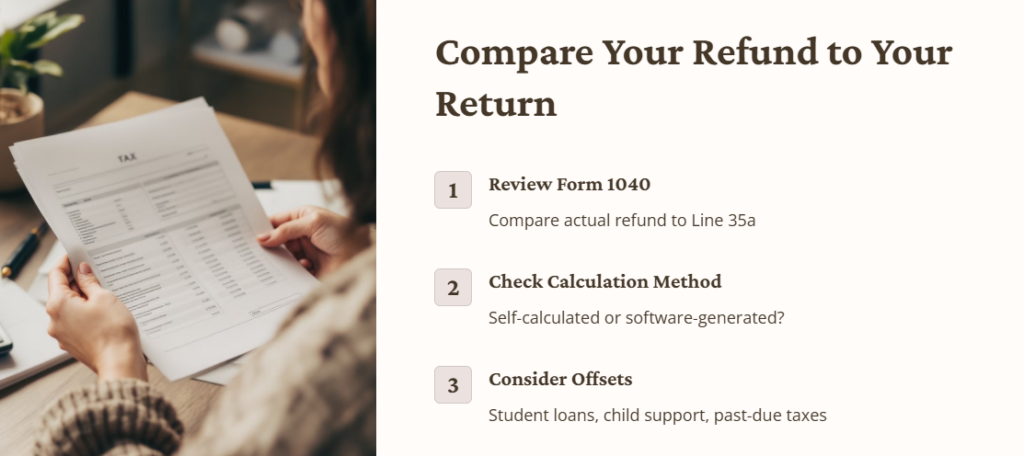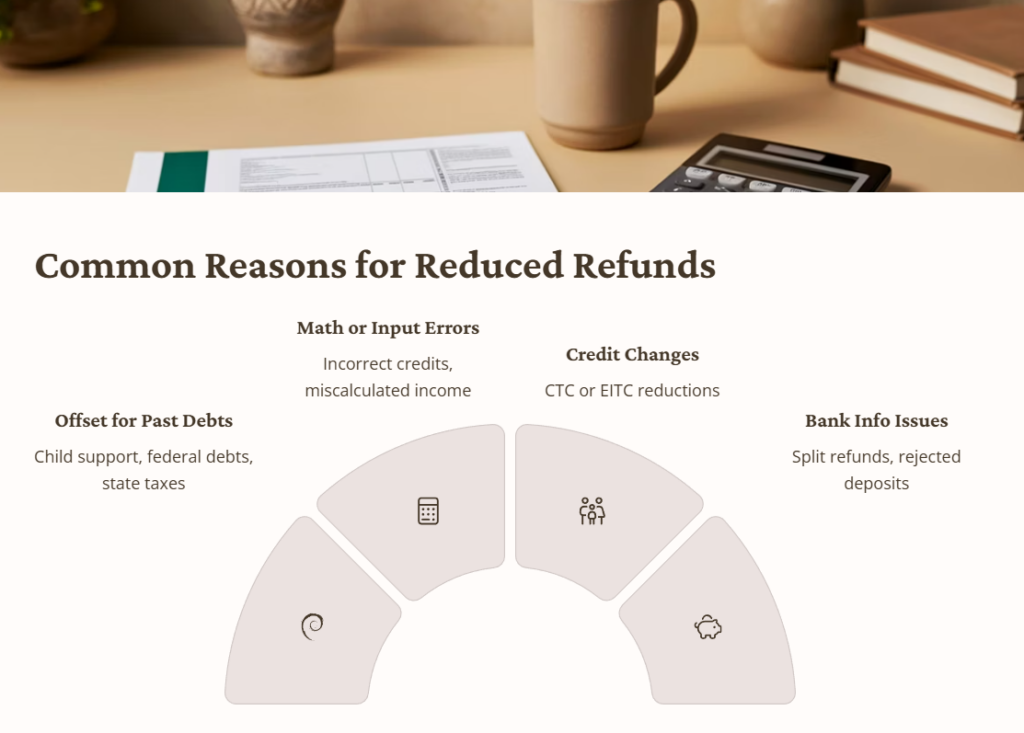You waited weeks for your tax refund, maybe even refreshed your bank app every morning…
And then it finally arrived — but it’s way less than you expected.
So now what?
Before you panic or assume the IRS made a mistake, take a deep breath. There are actually several common reasons why your refund might be smaller than you thought — and steps you can take to figure it out (and fix it if needed).
Let’s walk through what to check, who to contact, and how to make sure you’re not leaving money on the table.
Explore more in this After-Filing IRS Series →
After You File: IRS Refunds, Notices, and Audits (Coming Soon)
├─ IRS Refund Tracker Guide, Avoid Delays
├─ Why Is Your Tax Refund Delayed
├─ Direct Deposit vs Paper Check: Which Is Faster
├─ ✅ Tax Refund Smaller Than Expected? (You are here)
├─ How to Respond to an IRS Letter or Tax Notice
├─ 5071C, 4883C, 5747C: IRS Identity Theft Victim?
├─ Got a CP2000 Notice From the IRS? What It Means and Exactly How to Handle It
├─ Disagree with an IRS Notice? How to Appeal with Sample
└─ What Triggers an IRS Audit? 7 Common Red Flags
Step 1: Compare Your Refund to Your Return
Start by reviewing your filed tax return (Form 1040) and comparing it to the actual refund amount you received.
Ask yourself:
- Did you calculate the refund yourself, or did tax software do it?
- Is the refund amount you received lower than what’s listed on Line 35a of your Form 1040?
- Did you factor in things like student loan offsets, child support debt, or past-due taxes?
This gives you a baseline — whether it’s a math mistake or IRS adjustment.

Step 2: Check for an IRS Notice
If the IRS changed your refund amount, they’ll usually send a letter explaining why.
Look out for notices like:
| Notice Code | What It Means |
|---|---|
| CP12 | The IRS corrected a math error or credit on your return, changing your refund. |
| CP49 | Your refund was applied to a past-due tax debt or other federal debt. |
| CP40 | Your unpaid tax account has been assigned to a private collection agency. |
| CP71 | Reminder that you still owe taxes from a prior year. |
| Letter 4883C | The IRS needs to verify your identity before processing your return. |
💡 Tip: These letters often arrive a few days after the direct deposit or check is issued, so give it some time if you haven’t received one yet.
Step 3: Understand Common Reasons Your Refund Was Reduced
1. Offset for Past Debts
The Treasury Offset Program may take part (or all) of your refund if you owe:
- Past-due child support
- Federal agency nontax debts
- State income tax obligations
- Certain unemployment compensation debts
2. Math or Input Errors
You (or your tax software) may have:
- Claimed incorrect credits or deductions
- Miscalculated taxable income
- Entered incorrect info from a W-2 or 1099
3. Changes to Credits Like CTC or EITC
If you claimed a Child Tax Credit or Earned Income Tax Credit, the IRS may reduce or deny it if:
- Your income or dependent info doesn’t match IRS records
- You didn’t qualify but claimed it anyway
4. Incorrect Bank Info
If your refund was split and only one account processed successfully, the rest may have been rejected or delayed.

Step 4: Log Into Your IRS Account
If you didn’t receive a notice or want to check the details now, create or log into your IRS Online Account.
You can:
- See your refund amount and any adjustments
- Check account transcripts
- View past notices and payments
Step 5: Call the IRS or Offset Program If Needed
If the refund amount still doesn’t make sense:
- Call the IRS Refund Hotline: 1-800-829-1954
- For refund offsets: Call the Treasury Offset Program at 1-800-304-3107
- Use the IRS’s Where’s My Refund? tool to check basic status
Be sure to have:
- Your Social Security Number
- Filing status (Single, Married, etc.)
- The exact refund amount listed on your return
Can You Get the Rest of Your Refund Back?
Sometimes, yes.
If the IRS made a mistake or if you believe a credit or deduction was incorrectly reduced, you may:
✅ File an Amended Return (Form 1040-X)
If you spot an error on your original return or want to claim something you missed
✅ Request a Refund Reconsideration
If the IRS reduced your refund and you have documents to prove your original numbers were correct
How to Avoid This Next Year
- Use reliable tax software or a pro
- Double-check your income and dependent info
- Update your address and bank info
- Check for outstanding debts before you file
- Track your return status and sign up for IRS alerts

It’s frustrating to get less than expected — especially when you were counting on that refund. But in many cases, the reason is fixable or at least understandable.
Start by reviewing your return and checking for IRS notices.
If something still doesn’t add up, don’t hesitate to contact the IRS and ask questions. The sooner you act, the sooner you can resolve the issue — and maybe even recover what you’re owed.
🔗 Want to see how all of this fits together?


